How Russian Trolls Won American Hearts and Minds
The techniques were not sophisticated, but the messages were on target.
By Anela Chan and Greg Dale, Tech for Campaigns

Mixing the likes of Laurel and Yanny with malicious intent, Russian trolls in 2015–17 produced thousands of pieces of divisive clickbait — and Americans consumed it voraciously.
On May 10, 2018, Democrats on the House Intelligence Committee released 3,500 Facebook and Instagram ads posted between June 2015 and July 2017 by the Internet Research Agency (IRA), a Saint Petersburg-based “troll farm” known for its efforts to influence public opinion through social media. Tech for Campaigns is focused on the intersection of digital tools and politics, and so we took a deep interest in this data. Joining our own efforts together with a dataset from Data for Democracy volunteers, we found that while the IRA’s technological efforts were far from sophisticated, American Facebook users ate up their content.
Our analysis confirms that the Russian strategy was not simply to advocate Trump or insult Hillary. As the February Mueller indictment of the IRA said, the strategy was to “sow discord,” targeting different American racial, regional, religious and sexual identities. Despite extraordinarily basic targeting and and crude graphic design, the IRA‘s work was very successful, delivering more than 40 million ad views and achieving a click through rate almost 10x higher than Facebook’s averages.

Advocating for Trump or Hillary was not the focus
As the chart below indicates, only a small portion of the ads mention Trump or Hillary. As the 2016 election drew near, the words “Trump” and “Hillary” began to appear more often. Looking at text likely understates the prominence of the election, but does portray that obvious messaging around the presidential election remained a small part of the overall effort.
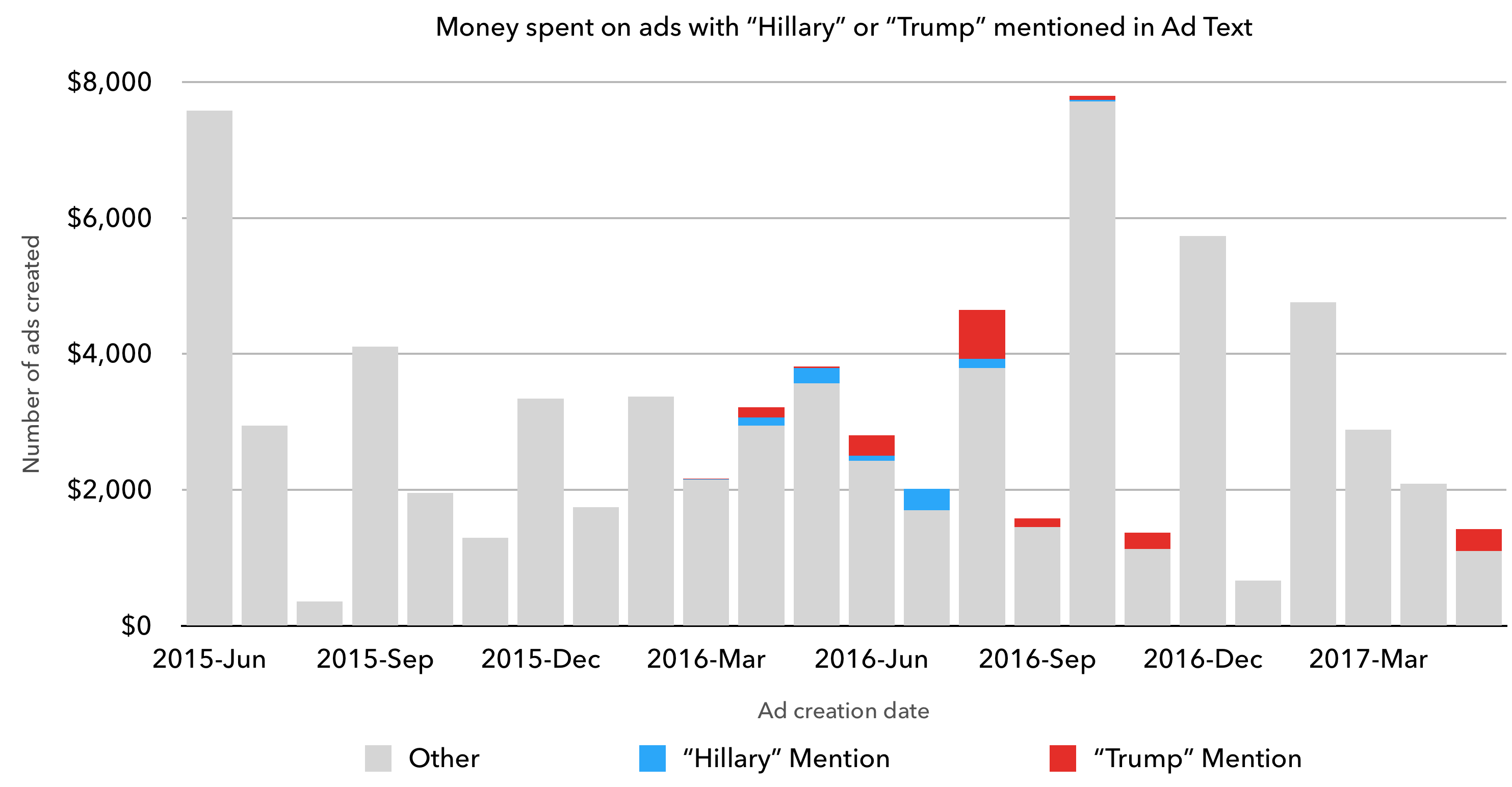
Instead, the IRA took aim at identity politics
The IRA’s modus operandi was targeting interest groups: pairing divisive messaging with Facebook’s interest advertising tools, sending users to Facebook Pages that the IRA had created, where ideological echo chambers had been established.
“They sought to harness Americans’ very real frustrations and anger over sensitive political matters in order to influence American thinking, voting and behavior.” — Rep. Adam Schiff (D-CA)
They targeted African Americans, conservatives, Latinos, Muslims, LGBTQ groups, and even Texas Secessionists, sending them to pages like “Brown Power”, “LGBT United”, and “Born Liberal”.
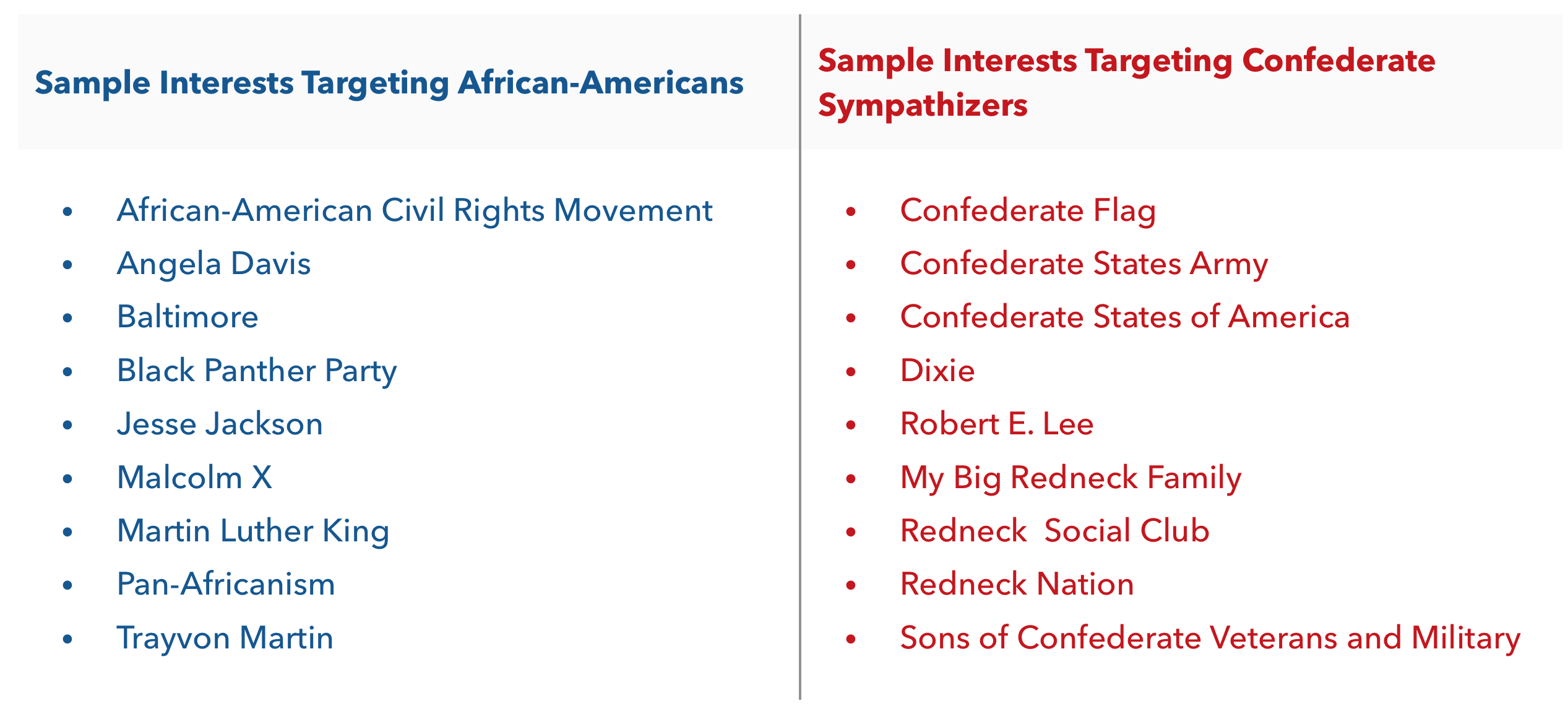
Although most of the activity went towards building these Facebook groups, several ads promoted actual physical events, including a rally that was simultaneously pro-Beyonce and anti-Beyonce, and self-defense classes for African Americans.
The ads concentrated on African Americans and Conservatives
The House released more than 3,500 ads. To produce an accounting of this large set, we used a combination of statistical techniques and manual review. The Russians placed 85% of their spend towards African Americans and Conservatives, mostly across the entire United States, but with concentrations in Texas and “Black Lives Matter cities” like Ferguson and Baltimore. Here’s how their efforts broke down by targeted audience and geographies:
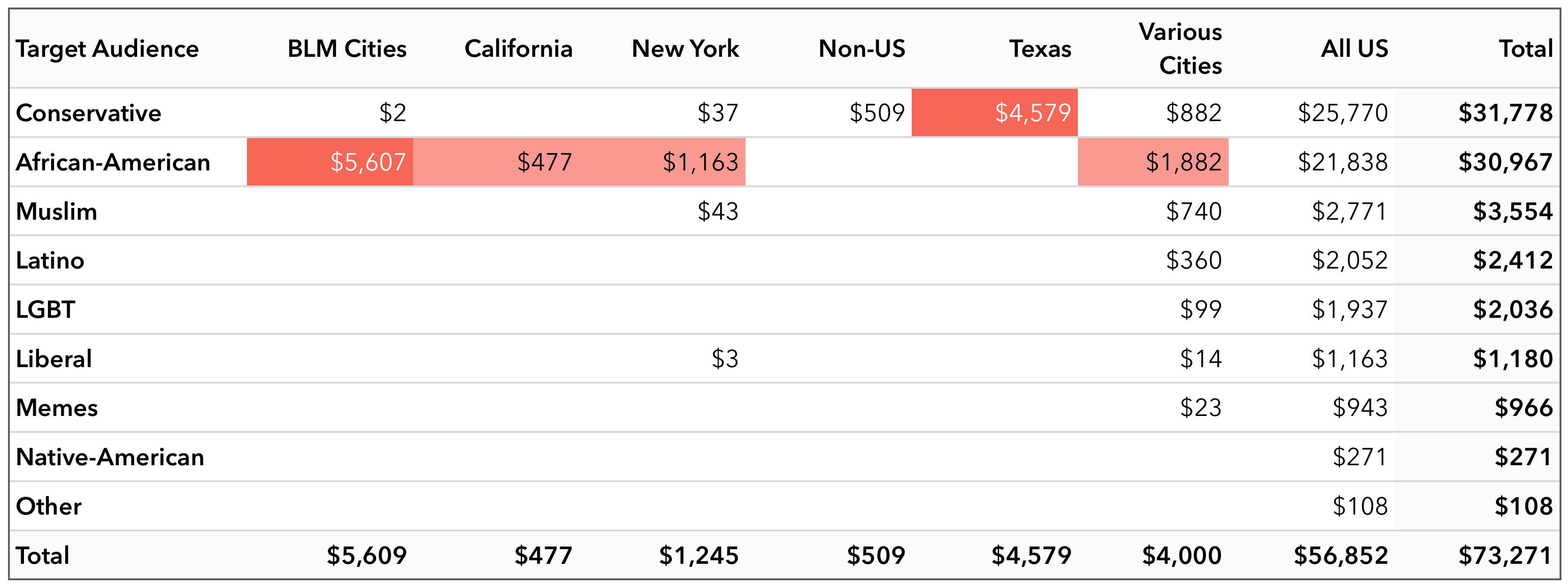
Nurturing their audience with a smile
While other analyses have focused on polarization through outrage, the IRA’s trolls actually used a mix of angry, uplifting, funny, and sarcastic messaging. Commercial advertisers are well-versed in growing and retaining audiences on Facebook through diverse and “snackable” content, and the IRA was no different. Using sentiment analysis, we found the top-viewed and most-clicked ads were largely not angry in tone:
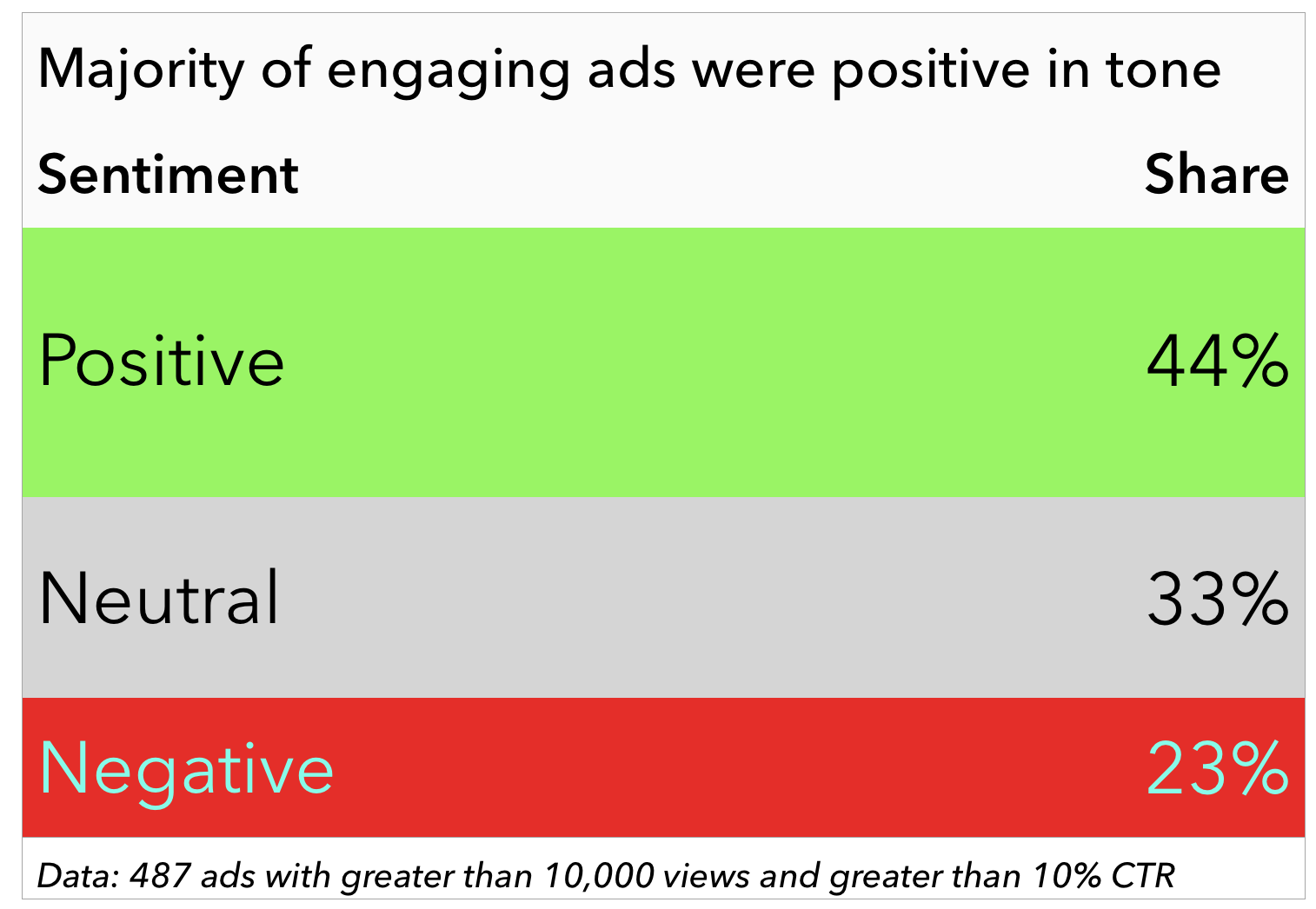

The IRA’s digital prowess: crude but effective
Relative to commercial standards for Facebook advertisers, the IRA’s methods were not sophisticated. They targeted their ads to very broad geographic areas, like the entire United States, with the majority of ads using Facebook’s interest targeting system, which targets ads according to users’ Likes and other expressed preferences. Interest targeting is considered a fairly crude targeting method. In fact, about 6% of ad spend was completely untargeted, leaving these highly specific, polarizing ads to be seen by random US adults, a technique that would be malpractice for professional digital marketers.
As told by this dataset, the IRA was not investing in sophisticated targeting. They were not targeting specific lists of voters or only swing states. They didn’t need to; the content they produced, their relentless iteration, and the reach of Facebook’s platform enabled their ads to have an extreme amount of engagement.
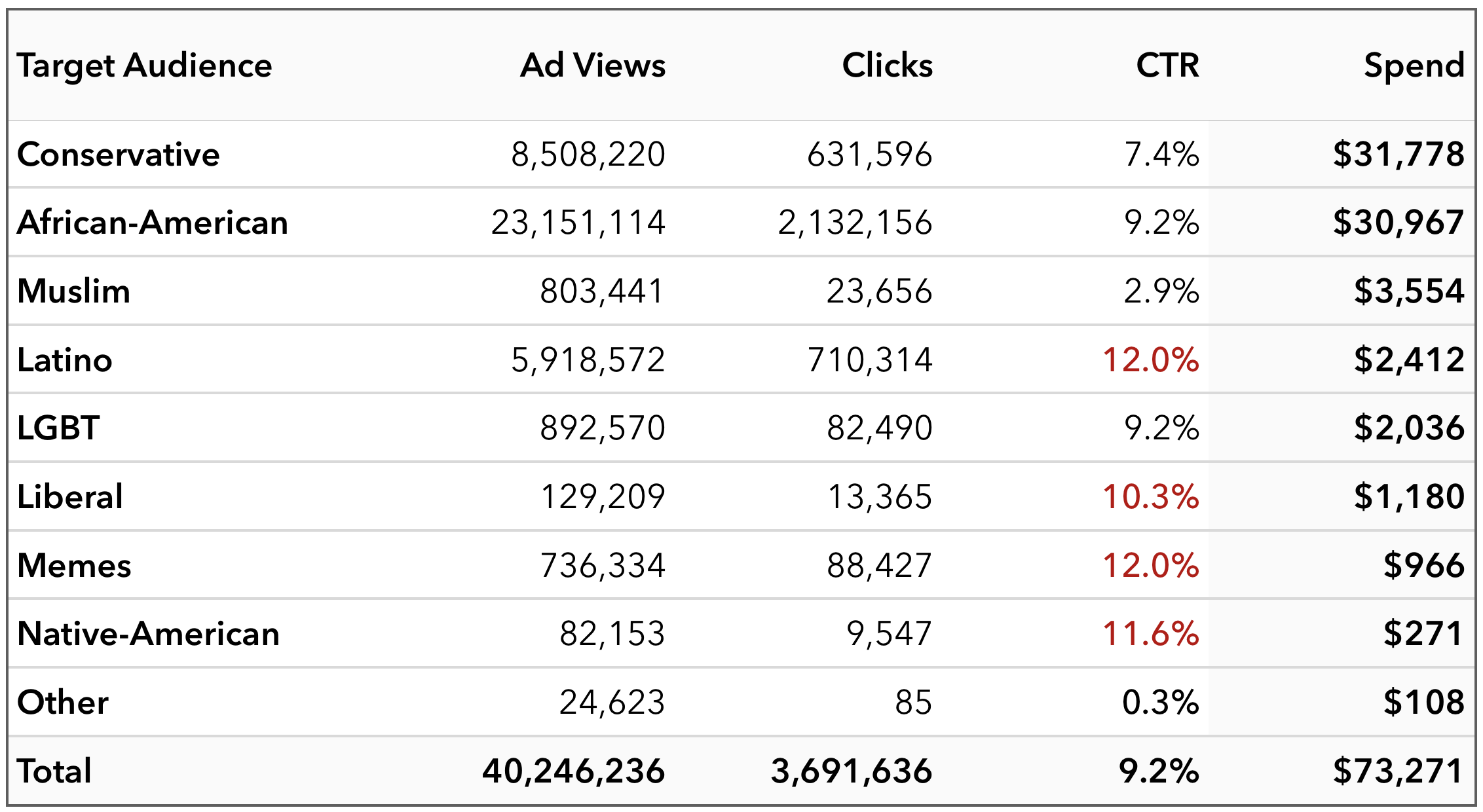
Efforts at engaging Muslims were notably less successful — a likely reflection of content that didn’t resonate with its audience as well as others did.
Strong messaging and relentless iteration paid off
That the IRA’s project, paid for in Rubles, was aimed at distributing content to create strife in the United States is not new; what is now clear, though, is that American Facebook users responded incredibly well to it. A click is just a click; it does not equate to a changed mind or a manipulated election, but the high rates of engagement with this polarizing content suggests that it successfully registered with its viewers. Whether by bad intent or good luck, the IRA’s propaganda successfully tapped into a strong vein of divisive identity politics, and Facebook’s reach and algorithmic bias towards engagement enabled it to spread and resonate amongst more than millions of Facebook users.
Special thanks to Ethan Chen and Alex Lindsay, as well as Data For Democracy volunteers Scott Came and Jeff Kao for their work parsing and clustering this dataset.